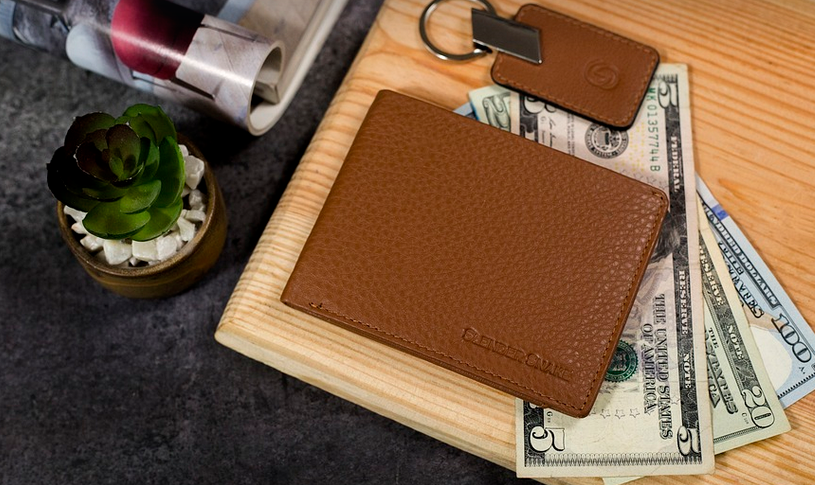Why Choose Leather?
There’s a certain magic about leather, isn’t there? It’s got this timeless appeal, this ruggedness that speaks volumes. And when you think about it, no other material quite captures the essence of our connection to nature and history like leather does. But beyond its aesthetic allure, there’s a reason why leather reigns supreme in the world of knife sheaths. It’s not just about looks, folks; it’s about function, durability, and that elusive touch of craftsmanship.
A Journey Through Leather Sheath Types
Let’s talk about the different kinds of leather used for knife sheaths, shall we? First off, you have your standard full-grain leather. This is the crème de la crème, folks. The thickest, most durable leather from a cow’s hide that’s been treated with care. It’s got those natural grain patterns and creases that just scream “crafted” or “authentic.” They offer a lifetime of protection to your blade.
Then you have top grain leather. This isn’t quite as robust as full-grain, but it still offers excellent durability and flexibility for your knife sheath. It comes from the surface layer of the hide, which means less chance of scratches or imperfections than the thicker, rougher hides.
Now let’s talk about veg leather. For those who prefer a lighter, more flexible option, the veg leather is your best friend. Made with vegetable-based tanning solutions, it’s softer and easier to work with, offering a great way to practice your knife sheath crafting skills without breaking the bank.
And then you have some of the rarer options like suede or nubuck leather. These are known for their softness and luxurious feel, making them perfect for those who value aesthetics over sheer strength. They’re often used for dress knives or pocketknives where a touch of elegance is desired.
The Art of Selecting Your Leather
So, you’ve got your eyes set on a leather sheath, and you know your knife needs some serious protection. But with all the different types of leather available, choosing the right one can feel like navigating an unfamiliar forest. Don’t worry, though! Here’s what to keep in mind as you make your selection:
First, consider the type of knife you’re carrying. Is it a heavy-duty workknife or a delicate EDC carry? A larger blade might need a more robust leather than something smaller.
Next, think about how you plan to carry your knife. Will it be in your pocket, on your belt, or strapped to a sheath? The size and shape of the sheath should complement the knife’s design.
Finally, pay attention to the weight and thickness of the leather. Thicker leather offers more protection but might feel heavier on your hip, while thinner leather is lighter and easier for everyday carry.
The Craftsmanship Behind Leather Sheaths
There’s an undeniable charm in a handcrafted leather sheath. It’s not just about making something functional; it’s about telling a story. And when you consider the history of knifemaking, leather sheaths have been integral to the craft for generations.
The process is often one of patience and attention to detail. Skilled artisans use various techniques like sewing, cutting, and edge-finishing with precision and care. Each stitch tells a tale, each curve a reflection of the craftsman’s artistry. It’s about more than just a sheath; it’s about celebrating tradition and craftsmanship.
From traditional hand stitching to modern machine tools, leather sheaths offer a diverse range of styles and levels of complexity that cater to every taste and preference. Let’s face it, there’s nothing quite as satisfying as holding a perfectly crafted knife sheath in your hands – it’s like owning a part of history itself.
Pro Tips for Leather Sheath Care
Leather sheaths are known for their longevity but that doesn’t mean they are immune to wear and tear. With proper care, your leather sheath can be cherished for years to come. Here’s how:
**Regular Cleaning:** Use a damp cloth or saddle soap to gently clean the exterior of your sheathe every so often. Avoid harsh chemicals that could damage the leather’s finish.
** conditioning and lubrication:** Leather can become dry, cracked, and brittle with time. Apply a leather conditioner after cleaning to moisturize and restore its natural flexibility.
**Proper Storage:** Store your sheaths properly when not in use. Use cedar chests or other breathable storage containers to prevent mold growth and keep them free from dust and dirt.
**Protection from the elements:** Avoid exposing your sheath to direct sunlight, excessive heat, or extreme humidity as these factors can weaken the leather over time.
By following these simple steps, you’ll ensure that your leather sheaths stay in top condition for years to come!
